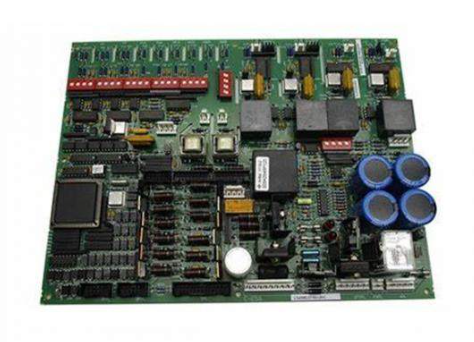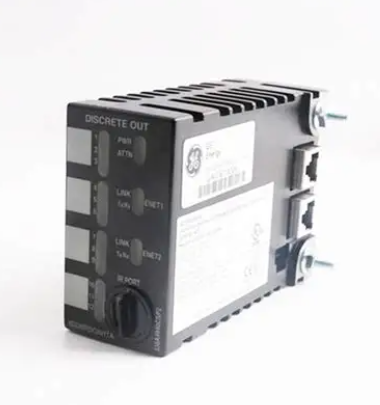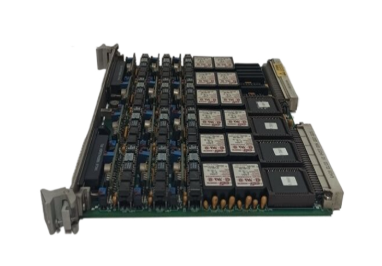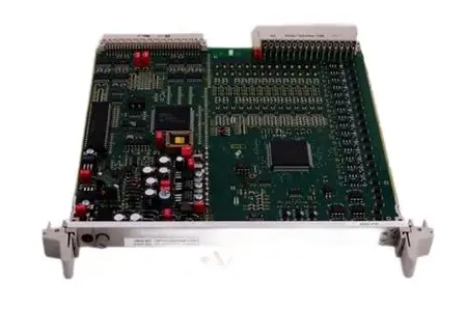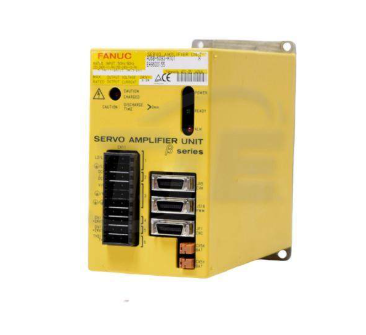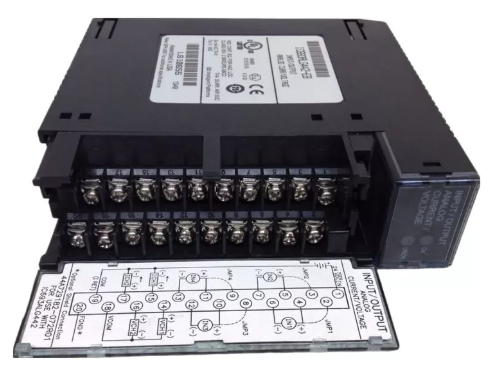Research progress of biomass conversion and utilization technology
1. Characteristics of biomass energy
Biomass is a complex material consisting mainly of cellulose, hemicellulose and lignin, with small amounts of tannins, fatty acids, resins and inorganic salts. This renewable raw material has great potential for power generation and the production of high value-added chemicals. As a new renewable energy, biomass energy has many advantages compared with other fossil energy sources:
1) Renewable. Biomass energy can be regenerated through the photosynthesis of plants, compared with coal, oil, natural gas and other fossil energy, is a renewable energy, and rich resources, can ensure the permanent use of energy.
2) Low pollution. The non-metallic content of sulfur and nitrogen in biomass is low, and the sulfur compounds and nitrogen oxides produced by combustion are less. Since the amount of carbon dioxide absorbed by biomass during growth is the same as the amount of carbon dioxide emitted, the net emissions of carbon dioxide to the atmosphere are almost zero when used as fuel, which can effectively reduce carbon dioxide emissions and the production of acid rain phenomenon.
3) The total quantity is very abundant. Biomass is the world's fourth-largest carbon-containing energy source after coal, oil and natural gas. Biomass energy plants (referred to as "biomass resources") distribution area is very wide, with the continuous development of agriculture and forestry, biomass resources will be more and more. Biomass resources can increase rapidly through large-scale planting, which can ensure its yield.
4) Security. The use of biomass energy is quite safe, and there will be no major safety accidents such as explosions and leaks.
5) Wide application. It is used in many fields of national economy such as biogas, solid fuel compression molding, pyrolysis gasification to produce gas, power generation, fuel alcohol production, biodiesel and so on.
In terms of the current international situation, there is an urgent need to adopt unconventional sustainable energy sources to meet the growing demand for liquid fuels. The use of biomass for the production of biodiesel, biofuels and ethanol is approaching commercialization. The development of biomass energy will play a positive role in ensuring energy supply, reducing dependence on oil market and stabilizing economic development, and is an effective new way to solve future energy problems. Many experts point out that the 21st century will be the era of biomass energy.

2. Utilization technology of biomass energy
The biggest advantage of biomass is that it is the only renewable resource containing carbon, and liquid and gas fuels can be produced by thermochemical conversion, biochemical conversion and photochemical conversion, involving pyrolysis, gasification, liquefaction, molding and direct combustion technologies. Clean fuels that are easy to store, transport and use are available in physical forms of liquids, solids and gases. Figure 1 lists the various biomass energy utilization technologies.
2.1 Biomass direct combustion technology
2.1.1 Biomass direct combustion fluidized bed technology
Biomass direct combustion technology is mainly divided into stove combustion, boiler combustion and dense forming technology. The technologies involved are biomass direct combustion fluidized bed technology and biomass direct combustion layer combustion technology.
Many foreign companies such as the United States Idaho Energy Products Company, the United States B&W, the United States CE company and so on the use of fluidized bed technology to develop fluidized bed power generation boilers to treat biomass has a considerable scale and certain operating experience. In Sweden, branches and leaves are used as fuel for large fluidized bed boilers, and the thermal efficiency of the boilers has reached 80%. In Denmark, hay and coal are burned according to a mass ratio of 6:4 using a high-rate circulating fluidized bed boiler, with a thermal power of 80MW and a boiler output of 100t/h. Liu Hao, Lin Zhijie et al. improved the traditional fluidized bed combustion boiler according to the physical and chemical properties of rice husk and considering its combustion characteristics. With a unique combustion and air distribution method, a boiler with good fluidization performance, stable combustion and easy coking has been developed.
Chen Guanyi et al. cooperated with Wuxi Boiler Factory to design and develop a pneumatic conveying device for transporting rice husks, which not only has large throughput but also delivers safety, for 35t/h rice husk fired fluidized bed boiler. The unique design of the conveying device not only avoids the phenomenon of feed interruption, but also reduces the wear of the buried pipe in the bed and the ash accumulation on the heating surface. At the same time, the fuel application range of the boiler is expanded. The future development of biomass boilers depends on the fossil fuel market and decisions about the biomass market.
2.1.2 Direct combustion layer combustion technology
2.1.2.1 Development and utilization technology of agricultural and forestry wastes
Biomass layer burning technology has been widely used in the development and utilization of agricultural and forestry wastes. The Benson boiler funded by ELSAM Company in Denmark can not only make straw, wood chips and other materials fully burn on the grate, but also set fiber filters in the furnace and pipes to reduce the corrosion and wear of harmful substances in the flue gas to the equipment. After practical operation, it is proved that the improved biomass boiler runs stably and has good social and economic benefits. According to the burning mechanism of bagasse, Zhai Xuemin developed a kind of bagasse boiler with a closed furnace structure, with the combustion chamber and radiant heating surface arranged separately, which is beneficial to both timely ignition and stable combustion of bagasse. Because bagasse is representative in biomass fuel, the furnace type has certain applicability to bark, rice husk and other biomass fuels.
He Yuheng has developed and designed a layer fired boiler with a novel structure that can burn waste materials such as wood chips, wood flour and bark. The boiler can ensure the full combustion of wood chips and wood powder; Can prevent wood powder deflagration; The boiler is negative pressure combustion, which ensures that the wood powder does not breathe fire outside the furnace when burning, and provides valuable experience for the development and design of boilers for burning wood chips, wood powder and other forestry wastes.
2.1.2.2 Municipal solid waste incineration technology
With the development of urban construction and social progress, the output of municipal solid waste shows an increasing trend year by year. Therefore, it is necessary to develop new waste incineration treatment technology. Since the last century, in addition to Shanghai Pudong Yuqiao, many cities in China such as Beijing, Guangzhou, Xiamen, etc. are carrying out the construction of thousand-ton waste incineration plants, waste incineration can not only reduce environmental pollution, but also save a lot of land resources. Therefore, this technology has become a mainstream technology for domestic waste treatment in large cities. However, the waste incineration technology needs to be continuously improved and perfected in terms of tail gas treatment, secondary pollution and incinerator combustion efficiency in combination with China's basic national conditions. Due to the shortcomings of incineration technology, continuous research and exploration at home and abroad have developed the process of using anaerobic digestion technology to treat urban domestic waste. Compared with traditional incineration technology, the process has great advantages in treatment efficiency, treatment cost, resource recycling and other aspects. At present, this process has been widely used in urban waste treatment.

2.1.3 Compact forming technology
Sawdust, rice husks, branches, straw and other agricultural and forestry wastes with a certain granularity after drying under a certain pressure, can be continuously extruded into a variety of solid forming fuels such as rod, granular, block and other processing technology called biomass dense molding technology. Using the special adhesive action of lignin, or adding certain additives or binder to make it bond together to become a molding fuel, biomass raw materials through extrusion molding, the volume will be reduced, the density will be significantly larger, the moisture content will be reduced, convenient storage and transportation. This technology is widely used in high efficiency combustion furnace, biomass gasifier and small boiler.
According to the difference of process characteristics, the biomass dense forming process is divided into cold pressing dense forming, hot pressing dense forming and carbonizing dense forming, and each process has its own characteristics and application range. In recent years, domestic and foreign scientific research institutions in the biomass molding theory, biomass utilization devices, molding fuel combustion technology and other aspects of research, breakthrough progress has been made, the development and production of a variety of biomass dense molding machines with different functions and applications. In addition, there are single-head and multi-head screw extrusion rod compact forming machines, which have been put into actual production in small batches, and have achieved certain social and economic double benefits. Due to the influence of various factors, there are also problems of one kind or another in the forming machine, forming raw materials and supporting equipment, and it cannot be expected to be fully applied in the short term. In the future, we should focus on the practicability of equipment, reduce energy consumption, reduce wear, the applicability of raw materials, and serialization, so as to provide the necessary technical reserves for large-scale development and better use of biomass energy.
2.2 Biochemical transformation technology
2.2.1 Anaerobic digestion to produce biogas
Biogas fermentation is a (microbiological) process. Organic matter contained in crop straw, human and livestock manure and industrial and agricultural wastewater can be used as raw materials for biogas fermentation, and organic matter can be converted into biogas through the action of microorganisms under suitable conditions and anaerobic environment. The process is mainly divided into three stages: liquefaction, acid production and methane production.
2.2.2 Preparation of ethanol or methanol by enzyme technology
Various green plants (such as corncobs, fruits, beets, sweet sorghum, straw, straw, wood chips, grasses, and many cellulose-rich raw materials) can be used as raw materials for ethanol extraction. Ethanol, also known as alcohol, is often called "green oil" as a fuel. There are many ways to produce ethanol, mainly: ① the use of sugar-containing raw materials directly fermentation; ② Indirect use of carbohydrate or starch fermentation; ③ Cellulose raw materials such as wood are hydrolyzed by acid or enzyme hydrolysis to ethanol.
2.3 Thermochemical conversion technology
Thermochemical conversion technology refers to the use of chemical means to convert biomass into high-grade, easy to store, easy to transport, high energy density and commercial value of solid, liquid and gaseous fuels, as well as heat, electric energy and other energy products, fuel material technology J. Thermochemical conversion is an effective method to produce biofuels from biomass, which mainly includes baking, liquefaction, pyrolysis and gasification technologies. Through these conversion technologies, solid, liquid and gaseous biofuels produced from biomass are used for heat and electricity generation. Liquid bio-oil can be further converted into chemicals, while syngas can be synthesized into liquid fuel.
Pyrolysis is one of the best processes to deal with solid waste, the temperature is generally 300 ~ 600℃, there are three ways of slow pyrolysis, fast pyrolysis and flash pyrolysis. The process can be divided into four stages: material drying, hemicellulose pyrolysis, cellulose and lignin pyrolysis. In the process of biomass pyrolysis, heat is transferred layer by layer from outside to inside. The first is the surface of the particle, and then from the surface to the interior of the particle, the heated part of the particle is rapidly cracked into charcoal and volatile components, and the products after cracking will continue to crack under the action of temperature. Most of the biomass pyrolysis processes used in practice are atmospheric or near-atmospheric reactions, and the pyrolysis products are mainly composed of bio-oil, gas and solid carbon.
Biomass gasification is also a kind of biomass thermochemical transformation, its basic principle is in the case of incomplete combustion, the raw material heating, so that the high molecular weight of the compound cracking into H2, CO, small molecular hydrocarbons and CO2 and other low molecular weight mixture process. Air or oxygen, water vapor, and a mixture of water vapor and oxygen are usually used as gasification agents. The product of gasification is syngas, which is further converted into liquid fuels such as methanol and ethanol through Fischer-Tropsch synthesis or biosynthesis, and can also be directly used as fuel for gas motors.
2.4 Solid waste treatment technology
For the treatment of solid waste, there are three traditional ways: landfill, incineration and biochemical treatment. Landfill and incineration methods result in a waste of resources and energy. At present, more in-depth research has been done on the reuse of biomass energy in waste at home and abroad, mainly using feed, fertilizer, biogas, fuel and other ways to make scientific and effective use of biomass. If it is processed into feed, make full use of its nutrients; Composting technology was used to treat yard waste, organic biological waste, organic residual sludge and agricultural waste. Biogas technology is used to treat all kinds of organic wastes in agriculture, industry and human life. In order to avoid secondary pollution while producing biogas, it is necessary to reuse biogas residue and biogas liquid, which can be directly used as fertilizer or made into commercial fertilizer by solid-liquid separation. Using the compression molding technology of biomass, the original loose, fine, amorphous biomass raw materials can be compressed into rod, granular, block and other forming fuels under certain conditions.

2.5 Biomass liquefaction technology
The liquefaction technology of biomass energy refers to the technology of converting biomass into liquid fuel by hydrolysis, pyrolysis or catalysis. By chemical processing of biomass, liquid fuels such as fuel ethanol, methanol, bio-oil, etc. Under certain conditions, biological fermentation or acid hydrolysis technology can be used to convert biomass into ethanol for automotive or other industrial use. The use of biomass liquefaction technology can not only improve the utilization efficiency of biomass, but also expand its application range. Making liquid fuel from biomass liquefaction will be a frontier technology with development potential.
2.6 Supercritical transformation technology of biomass
Supercritical fluid (SCF) is a kind of fluid which is above critical temperature and critical pressure and has good fluidity, transferability, diffusivity and solubility between gas and liquid. It has the dual properties and advantages of both gas and liquid. Near its critical point, small changes in pressure and temperature will cause large changes in fluid density, solubility, dielectric constant and other physical properties.
Supercritical water has the characteristics of dissolving most organic matter and gas, high density and low viscosity, and the heat utilization efficiency of biomass gasification and pyrolysis in supercritical water is higher than that of conventional ones, so the biomass supercritical water gasification technology has been widely valued and has great development potential. Because the reaction temperature and reaction pressure required for supercritical water gasification have high requirements for equipment and materials, the research on supercritical water gasification of biomass has been limited, and the research on this aspect started late in China. With the continuous understanding and research of the unique physical and chemical properties of supercritical water, it has been found that supercritical fluid can be used in the pretreatment of biomass, pyrolysis, liquefaction and preparation of biodiesel to transform and efficiently utilize biomass resources. Such as biomass supercritical pyrolysis hydrogen production, biodiesel supercritical preparation, biomass supercritical liquefaction and biomass supercritical pretreatment. The supercritical conversion technology of biomass has great application potential, especially in the fields of gasification of supercritical water to hydrogen and esterification of supercritical methanol to biodiesel. However, due to the demanding reaction conditions of supercritical fluid, high requirements on energy consumption and equipment, and large losses, resulting in high production costs, the current application of supercritical fluid in biomass energy conversion is mostly in the research stage, and there is still a huge space for development in the research and improvement of technology and systems.
- EMERSON
- Honeywell
- CTI
- Rolls-Royce
- General Electric
- Woodward
- Yaskawa
- xYCOM
- Motorola
- Siemens
- Rockwell
- ABB
- B&R
- HIMA
- Construction site
- electricity
- Automobile market
- PLC
- DCS
- Motor drivers
- VSD
- Implications
- cement
- CO2
- CEM
- methane
- Artificial intelligence
- Titanic
- Solar energy
- Hydrogen fuel cell
- Hydrogen and fuel cells
- Hydrogen and oxygen fuel cells
- tyre
- Chemical fiber
- dynamo
- corpuscle
- Pulp and paper
- printing
- fossil
- FANUC
- Food and beverage
- Life science
- Sewage treatment
- Personal care
- electricity
- boats
- infrastructure
- Automobile industry
- metallurgy
- Nuclear power generation
- Geothermal power generation
- Water and wastewater
- Infrastructure construction
- Mine hazard
- steel
- papermaking
- Natural gas industry
- Infrastructure construction
- Power and energy
- Rubber and plastic
- Renewable energy
- pharmacy
- mining
- Plastic industry
- Schneider
- Kongsberg
- NI
- Wind energy
- International petroleum
- International new energy network
- gas
- WATLOW
- ProSoft
- SEW
- wind
- ADVANCED
- Reliance
- YOKOGAWA
- TRICONEX
- FOXBORO
- METSO
- MAN
- Advantest
- ADVANCED
- ALSTOM
- Control Wave
- AB
- AMAT
- STUDER
- KONGSBERG
- MOTOROLA
- DANAHER MOTION
- Bently
- Galil
- EATON
- MOLEX
- Triconex
- DEIF
- B&W
- ZYGO
- Aerotech
- DANFOSS
- KOLLMORGEN
- Beijer
- Endress+Hauser
- MOOG
- KB
- Moxa
- Rexroth
- YAMAHA
- Johnson
- Westinghouse
- WAGO
- TOSHIBA
- TEKTRONIX


Email:wang@kongjiangauto.com
























































































































